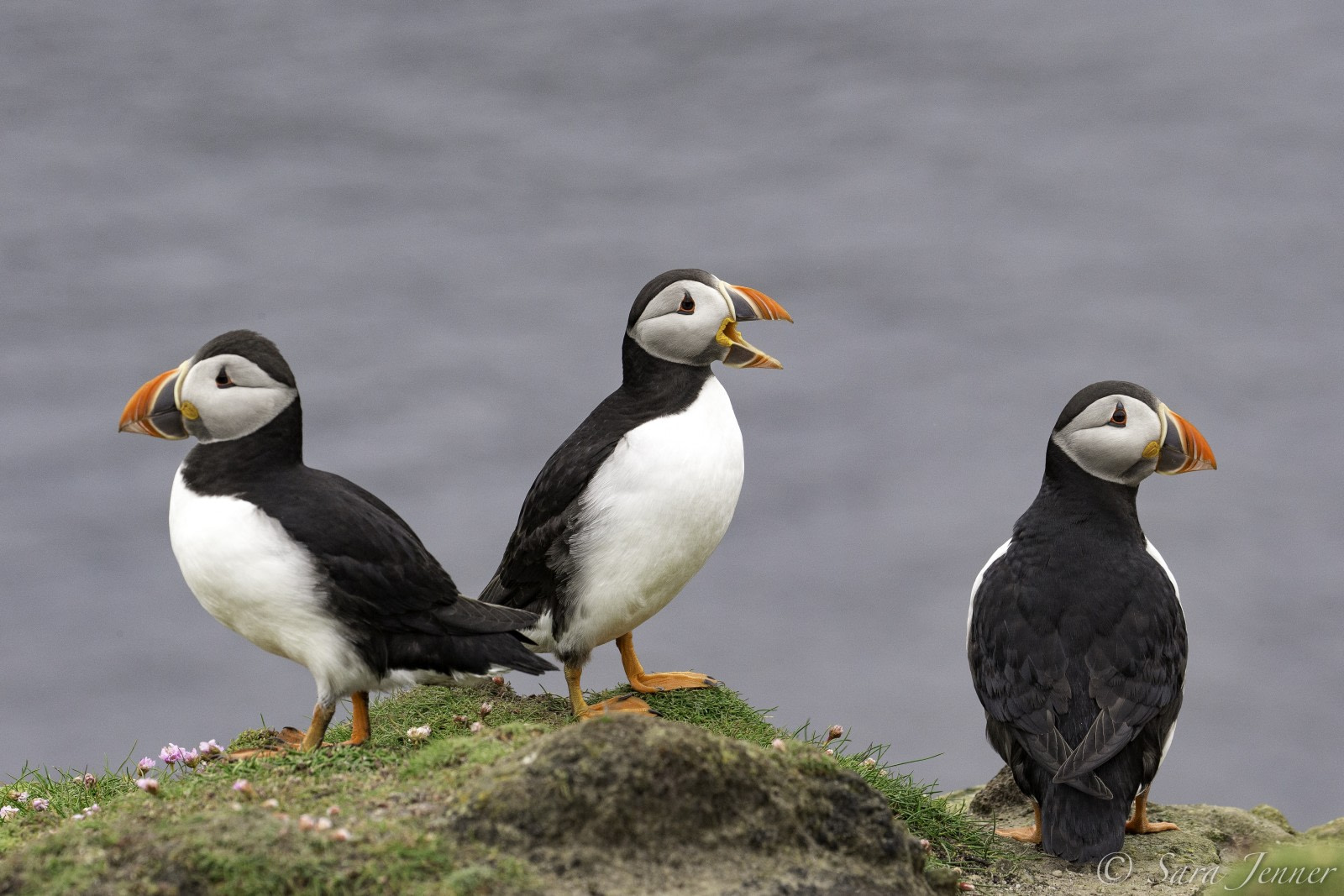
Atlantic Puffin: The Colorful Clown of the Sea
If there were a mascot for adorable seabirds, the Atlantic Puffin would win hands-down. With its brilliant beak, expressive eyes, and waddling walk, it’s no wonder this puffin has become a symbol of coastal charm from the U.S. to Iceland.
Let’s dive into the world of the Atlantic Puffin and explore what makes this little bird so beloved.
Where They Live
The Atlantic Puffin, also known by its scientific name Fratercula arctica, is the only puffin species found in the Atlantic Ocean. Its range includes:
- The coasts of eastern Canada and northeastern U.S.
- Iceland, which hosts over half of the global population
- Parts of Greenland, Norway, and the British Isles
Each summer, millions of puffins flock to these coasts to breed, forming noisy colonies on sea cliffs and grassy burrows.
Puffin ID Guide
Here’s how to recognize an Atlantic Puffin:
- Beak: Large, colorful (red, yellow, and blue), especially during breeding season.
- Feet: Bright orange and perfect for scrambling around rocky cliffs.
- Body: Black back, white belly, and a white face topped with a black “cap.”
- Size: About 10 inches tall, weighing just under a pound.
Outside of the breeding season, their beaks fade to a duller gray, and they spend months at sea.
What They Eat
Atlantic Puffins are expert divers and fishers. Using their wings like flippers, they “fly” underwater in pursuit of small fish like:
- Sand eels
- Capelin
- Herring
One of their coolest talents? They can carry up to 10 small fish crosswise in their beak at once, thanks to spiny structures on the roof of their mouth and tongue!
Breeding and Nesting
Puffins are monogamous and return to the same burrow—and mate—year after year. A few key facts about puffin parenting:
- They lay one egg per season.
- Both parents take turns incubating and feeding the chick.
- Chicks are called “pufflings” (yes, really!).
By late summer, the fledgling puffin takes its first flight—and won’t return to land again for several years.
Conservation Status
Atlantic Puffins are currently listed as Vulnerable by the IUCN. Major threats include:
- Climate change, which affects the availability of prey fish.
- Overfishing, which competes with puffins for food.
- Plastic pollution and oil spills.
Conservation efforts, like those by Project Puffin in Maine and protected reserves in Iceland, are helping puffin populations recover in some areas.
Puffin Fun Fact
Puffins were once nicknamed “sea parrots” for their colorful beaks. In Iceland, they’re also called “prófastur,” which means “little priest,” referring to their black-and-white robes.
Stay tuned for our next post in this puffin series: the flamboyant Tufted Puffin of the Pacific!
Sources:
- [1]: Project Puffin – Audubon
- [2]: National Geographic – Atlantic Puffin
- [3]: BirdLife International – Fratercula arctica
More photos below ↓











Disclaimer: This blog post is for edutainment purposes only and may not be entirely accurate.






